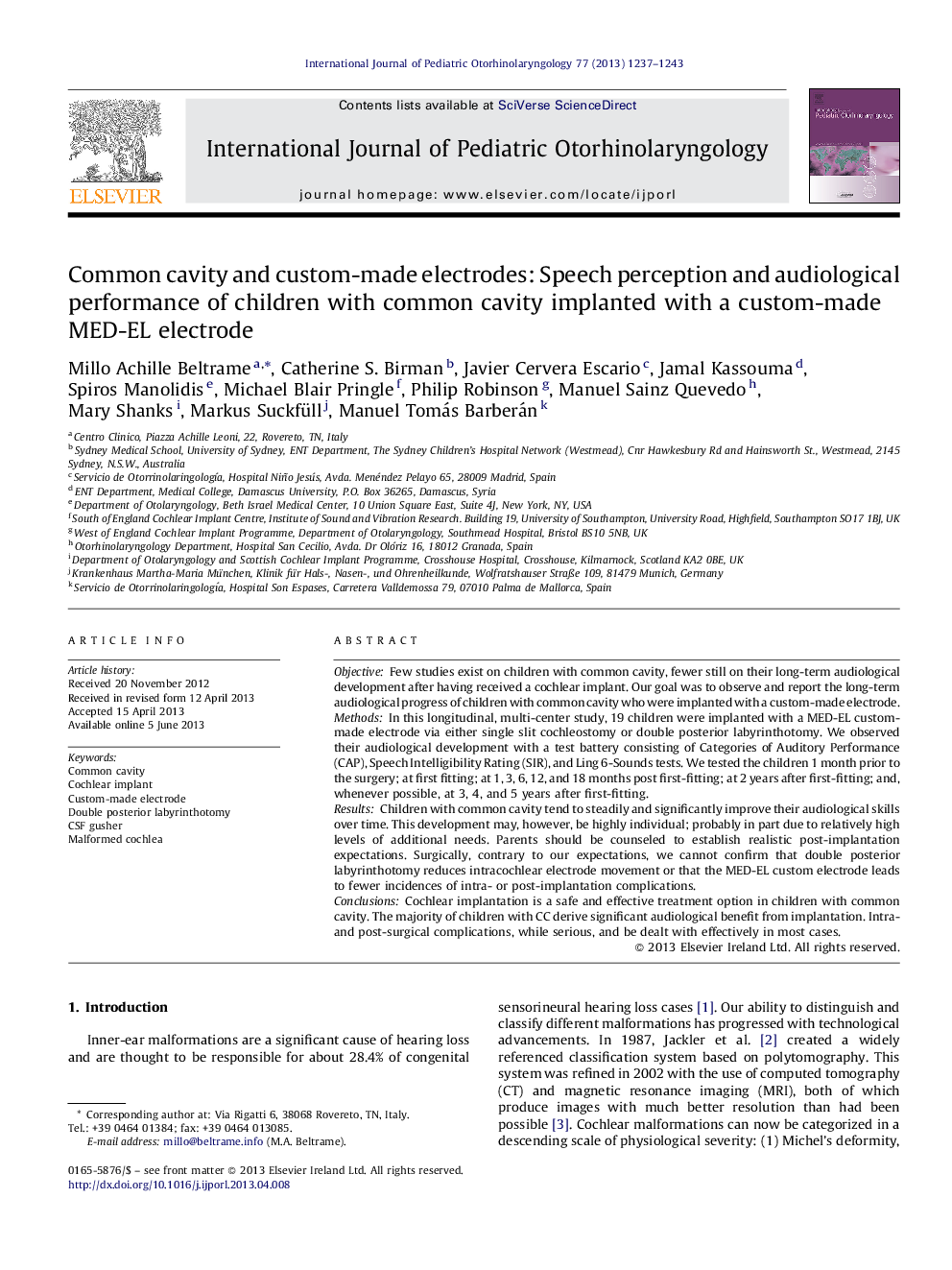| Article ID | Journal | Published Year | Pages | File Type |
|---|---|---|---|---|
| 4113036 | International Journal of Pediatric Otorhinolaryngology | 2013 | 7 Pages |
ObjectiveFew studies exist on children with common cavity, fewer still on their long-term audiological development after having received a cochlear implant. Our goal was to observe and report the long-term audiological progress of children with common cavity who were implanted with a custom-made electrode.MethodsIn this longitudinal, multi-center study, 19 children were implanted with a MED-EL custom-made electrode via either single slit cochleostomy or double posterior labyrinthotomy. We observed their audiological development with a test battery consisting of Categories of Auditory Performance (CAP), Speech Intelligibility Rating (SIR), and Ling 6-Sounds tests. We tested the children 1 month prior to the surgery; at first fitting; at 1, 3, 6, 12, and 18 months post first-fitting; at 2 years after first-fitting; and, whenever possible, at 3, 4, and 5 years after first-fitting.ResultsChildren with common cavity tend to steadily and significantly improve their audiological skills over time. This development may, however, be highly individual; probably in part due to relatively high levels of additional needs. Parents should be counseled to establish realistic post-implantation expectations. Surgically, contrary to our expectations, we cannot confirm that double posterior labyrinthotomy reduces intracochlear electrode movement or that the MED-EL custom electrode leads to fewer incidences of intra- or post-implantation complications.ConclusionsCochlear implantation is a safe and effective treatment option in children with common cavity. The majority of children with CC derive significant audiological benefit from implantation. Intra- and post-surgical complications, while serious, and be dealt with effectively in most cases.
